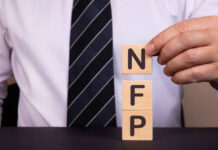Markets
Question: what is red hot and not temporary? – *Gaze* I don’t kn… – False. US inflation. Fact: prices rose at the fastest pace since the 90s in October. With 6.2% y/y (0.9% m/m, up from 5.4% in September) it crushes another psychological barrier at 6% and easily surpasses the 5.9% consensus. Energy obviously had an important part in last month’s price increases, sprinting 4.8% m/m higher as fuel oil soared 12.3% as well as gas service (6.6%).However, with core inflation also quickening from 4% to 4.6%, a new cycle high and the fastest in three decades, inflation has much deeper roots. Prices for used cars and trucks added another strong 2.5% m/m. The cost of shelter, a major component of (core) inflation, rose with 0.5% m/m, a well-above average number. This indicates inflation is broadening beyond categories that are associated with the economic reopening – an often used but flawed explanation for current strong upward price pressures. The US data came after yesterday’s strong PPI reading of 8.6% and stronger-than-expected similar data in China this morning. While European/US markets remained relatively stoic then, the story is much more different now. The US yield curve bear flattens with yields jumping as much as 6.8 bps at the short end. The 2y-yield erases the post-BoE decline as US money markets ramp up bets on Fed rate hikes (two discounted by the end of next year). It is set for a finish near or above the previous cycle high close. Yields increase 5 bps in the 10y tenor with surging inflation expectations compensating for a 4 bp decline in real yields (10y real rate new historical low). This may be markets expecting the Fed to pursue a short-lived tightening cycle that won’t suffice to kill off inflation durably before turning back to growth. It also helps explain the impressive jump in gold prices, whose appeal as an inflation hedge dominates over the opportunity cost as a non-interest bearing asset. The very long end of the US curve outperforms (+2 bps 30y) but we’re keen to see whether this will hold should tonight’s 30y auction disappoint as well – not an unlikely scenario after such a US inflation print. German yields join their US peers with a tad of reluctance. The curve slightly flattens with the belly (+1 bp) outperforming wings (+2.6 bps in 2y and 2.8 bps in 30y). The US dollar strengthened in a knee-jerk move to EUR/USD 1.154 before paring some of the gains to 1.157 (down from 1.159). The increased short-term rate support hangs in the balance with the continued decline in long real yields. USD/JPY reverses a four-day losing streak, bouncing from below 113 to 113.43. Sterling holds steady near EUR/GBP 0.855 as it awaits crucial talks between the EU and the UK on Friday. UK’s Frost struck a more conciliatory language, saying it won’t give up on talks with the bloc. However, given what’s at stake (ie the whole Brexit deal), it makes sense for sterling investors not to frontrun on any of such comments.
News Headlines
Czech inflation accelerated in October, rising by 1% M/M and 5.8% Y/Y (from 4.9% vs 5.5% expected). The yearly number is the highest since October 2008 and obviously way above the CNB’s 2% inflation target. Prices went up in nearly all baskets on a monthly basis with food being the only exception. The main driver of the Y/Y-number was price growth of housing and fuels. Imputed rentals (owner occupied housing costs) rose by 12.8% Y/Y. Yearly price rises in total goods and services amounted to 5.4% and 6.6% respectively. The Czech krone tested the recent highs (EUR/CZK 25.20 area) reached in the wake of last week’s unexpected 125 bps CNB rate hike. A break didn’t occur even as the CZK swap curves shows a further inversion. Yields rise by 14.4 bps for the 2y to 6.5 bps for the 10y.
Germany’s council of economic advisers published a report today calling on the ECB to communicate a normalization strategy soon. The four-member group warns for upside risks to the inflation outlook for coming years. In combination with public finances’ growing dependence on low interest rates, this could lead to dilemma’s at the central bank. They add that history suggests that the economic price is high is you act too late or half-hearted against spiraling price pressures. One of their proposals for detailing the exit is the introduction of individual governors’ expectations with regard to the policy rate, in line with the Fed’s dot plot.












